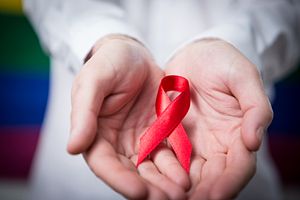Just in time for World AIDS Day (a UN event to raise awareness on HIV/AIDS), China released its updated statistics on AIDS, labeling the situation a “mild pandemic.” According to the Chinese Center for Disease Control and Prevention (CDC), there are over 575,000 people living with HIV or AIDS in China – up from the 437,700 reported in 2013. The CDC said there had been 177,000 deaths in China due to AIDS.
According to China’s Ministry of Health, there were nearly 4,000 new cases of AIDS reported in October 2015, and 1,006 deaths from the disease during the same month. It was by far the leading cause of death from infectious disease in China (there was a total of 1,276 deaths from notifiable diseases recorded during October 2015).
While the proportion of China’s population that is affected by AIDS remains quite low – less than six out of every 10,000 people – there are worrying trends for certain subgroups. The CDC noted that around 8 percent of men who have sex with men (MSM) in China are living with HIV/AIDS. Xinhua cited experts who believe the persistent stigma against homosexuality in China plays a huge role in putting that specific community at risk for infection.
“Many gay people in China are forced to have more risky and haphazard relationships as stigma prevents them from keeping long-term partners. To curb the spread of HIV, China needs to stem discrimination against gay people,” Xinhua quoted AIDS prevention activist Zhang Jinxiong as saying.
A man being tested for AIDS (who wished, unsurprisingly, to remain anonymous) told Xinhua that he was more afraid of people finding out he is homosexual than he is of AIDS. That mentality prevents many who are at risk from HIV/AIDS from even getting tested – meaning the actual prevalence of AIDS in China may be higher than records indicate. It doesn’t help that those suffering from HIV/AIDS continue to face discrimination and stigmas, due in large part to a lack of understanding about how the disease is transmitted.
That lack of education is likely contributing to the rapid rise of HIV/AIDS infections among young people in China. The CDC reported that infections among young people rose nearly 28 percent year-on-year for the first 10 months of 2015. There were 2,662 new cases reported among students, the CDC said – still a small percentage of the 97,000 total new cases, but a worrying increase nonetheless.
China is not alone in seeing HIV/AIDS infections rise among young people. A report from UNICEF warned that in the Asia-Pacific region, the number of young people (aged 10-19) dying of AIDS has more than doubled since 2005 – while adult deaths from AIDS in the region dropped 28 percent in the same period. Wing-Sie Cheng, the UNICEF regional advisory on HIV and AIDS, called the prevalence of HIV/AIDS in young people a “hidden epidemic.”
In China, as in the rest of the Asia-Pacific, stigma against premarital sex prevent youths from seeking HIV/AIDS testing. It also makes education on safe sex practices more difficult. Experimental initiatives to increase condom use, for example, have met with mixed success — a condom campaign aimed at China’s sex workers boosted condom use from 55 to 68 percent, but condom distribution on college campuses remains controversial and unpopular.
In a statement published on Monday, Chinese Premier Li Keqiang called for more public spending to prevent and treat AIDS, “especially in the worst-hit regions and poverty-stricken areas in the center and west of China.”

































